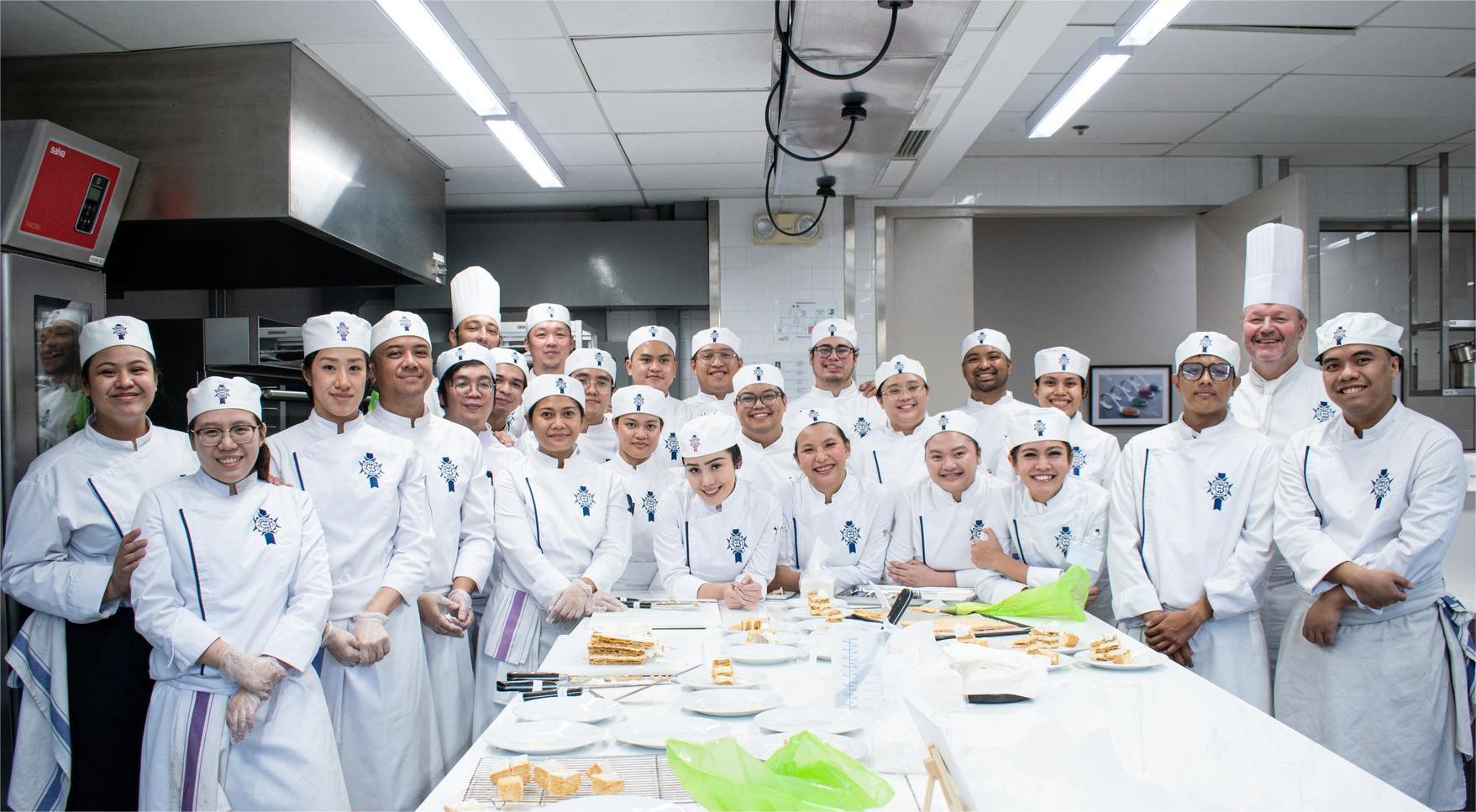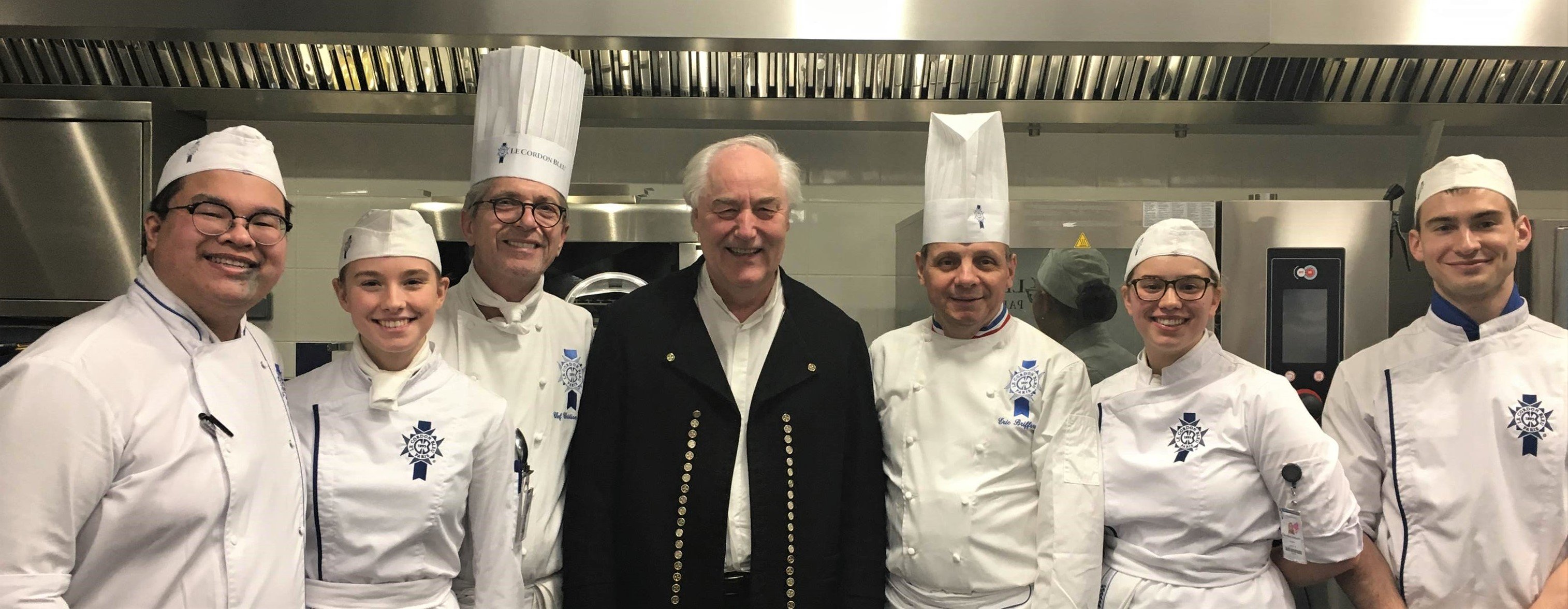
From the Philippines to France: A Filipino-French Tasting Tour
A special culinary journey unfolded at Le Cordon Bleu Ateneo de Manila (LCBA) during “From the Philippines to France: A Filipino-French Tasting Tour”—an event ...

This series of conferences is completely in line with the cuisine programme taught at the Institute. The cuisine programme provides students with a thorough and comprehensive understanding of French culinary techniques, whilst also enabling them to develop their own culinary signature. Le Cordon Bleu is constantly evolving and combines tradition, innovation and creativity. The “Science and Culinary Arts” conferences perfectly illustrate this desire to provide ever more innovative training programmes. They are avant-garde and provide students with the opportunity to open their minds to new techniques, nurture their inventiveness and their enthusiasm for finding new ingredients, and encourage them to push themselves ever further. The discovery of new innovations, an array of shapes, consistencies, flavours, odours, colours, spiciness or freshness, etc is therefore almost without limits.
During these conferences, which will take place every trimester at Le Cordon Bleu Paris institute, Hervé This and Chef Eric Briffard will discuss numerous preparations, made by the Institute’s students. These dishes, which are emblematic of the new trends, will be analysed and discussed in relation to three culinary arts themes: social, artistic and technical. The physical chemist will focus on the scientific and technological side, whereas the Chef will cover culinary technique and the artistic aspect of the dishes. At the end of the conference, conclusions will be made and proposals given for improvements which could be made to the preparations.
The forthcoming conferences, hosted by Hervé This and Chef Eric Briffard, will take place on 12 May, 16 July and 10 November 2020.
About Hervé This
Physical chemist at the INRAE and professor at AgroParisTech, Hervé This is one of the two founders of molecular gastronomy and the inventor of Note to Note cuisine. His innovative and scientific approach to cuisine enables him to explore culinary practices and transformations in order to understand phenomena, using ingredients and utensils which are not commonly found in the kitchen. He is also the Educational Director of Le Cordon Bleu Advanced Studies in Taste (HEG) programme, in partnership with Reims Champagne-Ardenne University.
About science and culinary art
For many years, cuisine was taught by repeating recipes before gradually evolving. Post 1980s, “molecular and physical gastronomy” took off, providing a completely innovative approach.
At the same time, it became apparent that equipment way beyond traditional saucepans could be used. Equipment typically found in chemistry and physics labs provided both ease of use and increased precision: “molecular cuisine” burst onto the scene. Chefs began using these new tools (liquid nitrogen, sous-vide evaporators, siphons (whipped cream dispensers), ultrasound probes, thermo-circulators…), in order to create increasingly innovative dishes. Some of the biggest names, such as Chefs Raymond Blanc, Emile Jung, Pierre Gagnaire, Ferran Adría, Heston Blumenthal, Wylie Dufresne and Grant Achatz, etc. were inspired by this practice, which continues to develop today in certain countries such as India and China.
In 1994, Hervé This introduced the cuisine world’s equivalent of synthesizer music, naming it “Note to Note cuisine”. Then, in 2009, he helped his friend Pierre Gagnaire to serve the first Note to Note dish in his restaurant in Hong Kong. Note to Note cuisine has been developing all over the globe ever since. One such example is Andrea Camastra (Senses, Warsaw, Poland), who opened the first restaurant entirely dedicated to Note to Note cuisine. Singapore is another example, having set up a nationwide development project on “sustainable, zero-waste cuisine”, focusing on national Note to Note cuisine, in which Chef André Chiang is taking part.
Every year, the International Note to Note cuisine competition takes place in Paris and is split into three categories: chefs, students, and amateurs.
About Le Cordon Bleu institute and Note to Note cuisine
Constantly on the lookout for new approaches and culinary trends, Hervé This’s technique immediately grabbed the attention of Le Cordon Bleu institute’s team of Chefs. Le Cordon Bleu Advanced Studies in Taste (HEG) programme students have sampled Note to Note dinners prepared by Chef Patrick Terrien and Le Cordon Bleu Paris institute Chef Instructors.
In Tokyo, Chef Instructor Guillaume Siegler made Note to Note sushi, winning 1st prize at the International Note to Note Cuisine Competition in 2015.
That same year, to mark Le Cordon Bleu’s 120th anniversary, a Note to Note sushi presentation was organized at the Tokyo institute. Hervé This also gave a conference on this theme at Ritsumeikan university, a partner of Le Cordon Bleu institute in Kyoto.
Copyright © 2025 Le Cordon Bleu International B.V. All Rights Reserved.